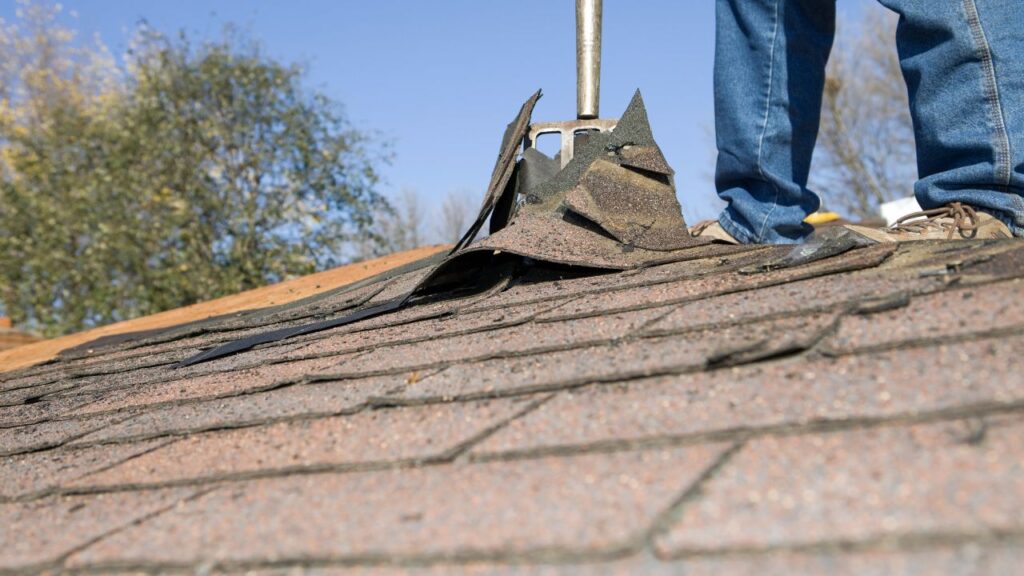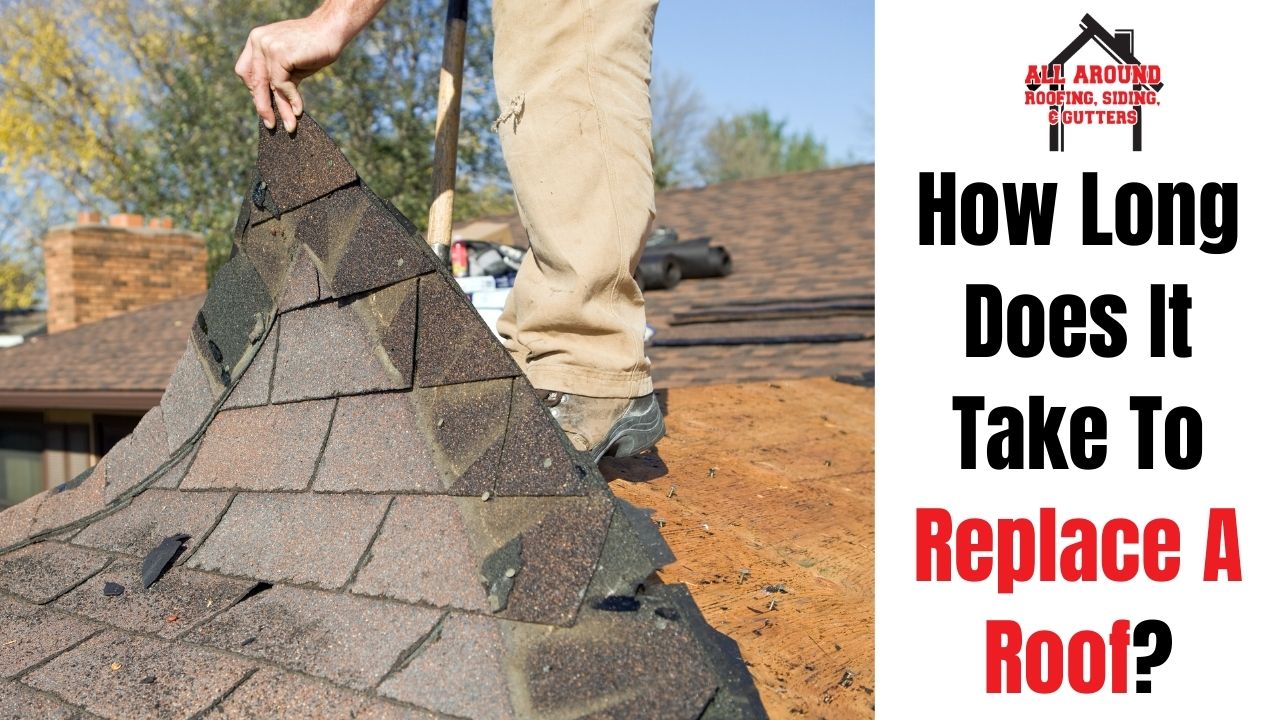Taking care of your home is crucial, and in Dayton, getting a new roof is a significant and expensive project. Homeowners might wonder, how long does it take to replace a roof? The answer varies if your home is in good shape and a standard size, the process typically takes one to three days. However, for larger homes, it might stretch to a week or even longer.
The time frame depends on various factors, including your home’s size, the materials used, the roof design, and the current weather conditions. In this blog post, we’ll delve into the typical considerations influencing the duration of a roof replacement and tips to ensure a smooth and successful job.
Common Factors That Determine The Roof Replacement Timeline
Let’s discover the factors that influence the roof replacement timeline:
1. Age of the Roof:
Roofs, like everything else, age over time. Typically, roofs last around 20 to 25 years, depending on the materials and care they receive. Signs of wear and tear, weather exposure, and material degradation can compromise a roof’s strength, leading to further damage that needs to be addressed during the replacement process.
Regular inspections are crucial as a roof approaches the end of its expected lifespan. Older roofs may require more thorough assessments to identify hidden issues, which also contributes to the overall project timeline.
2. Weather:
The weather determines when you can replace a roof. Roof work should be done during favorable weather conditions, avoiding extreme heat or heavy rain. Roofers prefer working in stable weather to prevent delays and ensure quality work.
Adverse weather can not only slow down the replacement process but also impact the overall quality of the installation. Checking the forecast before planning a replacement helps to schedule the project when conditions are ideal.
3. Type of Roofing Materials and Design:
Roofs can be made from different materials, such as asphalt shingles, wood, slate, or metal, and each material has its own installation time. Additionally, the design of the roof, including its shape and complexity, influences the duration of the replacement.
Metal roofs, for example, might be quicker to install than intricate slate tiles. It’s essential to understand the requirements of your chosen roofing material and roof design for a smooth and efficient installation process
4. Total House Size:
The size of the house directly impacts the amount of roofing material needed and the complexity of the project. Larger houses require more time, workers, and materials for the replacement.
Coordinating logistics and planning for a big project demands extra effort to ensure sufficient time and resources are allocated. Understanding the scale of the project is vital when considering the replacement of a roof on a larger home.
5. Steepness of the Roof:
The pitch of a roof can affect the difficulty and cost of the replacement project. Steeper roofs require additional safety measures and specialized equipment, potentially extending the overall timeline. Safety precautions, like harnesses and scaffolding, are more critical for steep roofs.
Contractors may charge higher rates due to the complexity and safety considerations involved. Recognizing the steepness of the roof is essential for estimating the time required for a successful replacement.

6. Accessibility of the Roof:
The ease of access to the roof significantly influences the speed of the replacement. Roofs that are easy to reach facilitate a faster replacement process, while complex layouts or obstacles can slow it down. Simple roofs make the job quicker and easier, whereas roofs with multiple faces or dormers may require more time and effort. Considering the accessibility of the roof is crucial for planning and accurately estimating project timelines.
7. Frequency and Quality of Roof Maintenance:
Regular maintenance is the key to extending a roof’s lifespan and identifying issues early on. Well-maintained roofs may require less extensive repairs before the replacement, reducing the overall time needed for the project.
Routine inspections and maintenance practices can catch issues before they escalate. Neglected roofs may need more work and time for replacement, highlighting the significance of regular maintenance in preserving the longevity of a roof.
Also Read: Roof Replacement Vs. Roof Repair: What’s The Best Option?
8. Signs of Damage or Aging:
Visible signs of damage or aging, like water damage, moss, or sagging, indicate the need for prompt attention. Addressing these issues promptly can prevent further damage and potentially reduce the overall replacement time.
Early identification of issues can lead to targeted and quicker repairs, while ignoring visible signs may result in more extensive and time-consuming replacements. Regularly checking for signs like water damage or sagging can be instrumental in determining when a roof needs replacing.
9. Old Material Disposal and New Material Delivery:
Disposing of old materials can influence the overall duration of the project. Efficient waste management contributes to a smoother and faster replacement process.
Coordinating timely deliveries of materials is also crucial for project efficiency. If you opt for a less popular roofing material, it may take longer to be delivered, extending the timeline of the project.
10. Amount of Structural Repairs Needed:
The extent of structural repairs needed, such as replacing decking, rafters, or fascia boards, significantly affects the timeline of the project. Assessing and replacing damaged structural components may extend the timeline.
Early identification of structural issues is essential to plan for necessary repairs, as fixing damaged parts of the structure takes more time. Understanding the structural aspects of the roof and addressing issues early in the planning phase is crucial for a successful and timely replacement.
The project may take longer if your roof has elaborate designs or extra features like valleys, skylights, chimneys, or other projecting elements. Furthermore, unforeseen damage may occur while the old roof is being removed, necessitating further repairs and possibly lengthening the project’s completion time.
Does Insurance Cover a Roof Replacement In Dayton?
If you need a roof replacement in Dayton, it’s crucial to speak with your insurance provider to understand exactly what is and isn’t covered. If a new roof is required as a result of storm damage, fire damage, or other covered perils, insurance will typically pay for it.
For the work to be done correctly, it’s also critical to work with a trustworthy Dayton roofing contractor. They’ll give you a detailed plan and keep you updated throughout the whole process. All Around Roofing, Siding & Gutters offers a free roof inspection and estimate so you can know exactly how much your roof will cost and how long it will take before any work begins.
Also Read: How Much Does A Residential Roof Replacement Cost?
Conclusion
To sum up, the roof replacement timeline depends on multiple factors. By understanding the process and factors influencing the timeline, homeowners can make informed decisions and enjoy the benefits of a reliable and durable roof.
With All Around Roofing, Siding & Gutters you will get a high-quality and professional installation that ensures the longevity of your roof and the overall safety and well-being of your home.
Want To Replace Your Roof In Dayton?
If your roof is showing signs of wear, such as lifted or missing shingles or if it’s leaking, it might be time for a roof replacement. All Around Roofing, Siding & Gutters offers roof inspection services to assess your roof’s condition. Whether you need roof repairs or a complete replacement, our experienced team is ready to help. With years of expertise in the industry, we have the skills to address all your roofing needs effectively! Contact us today at (937) 249-1416.


